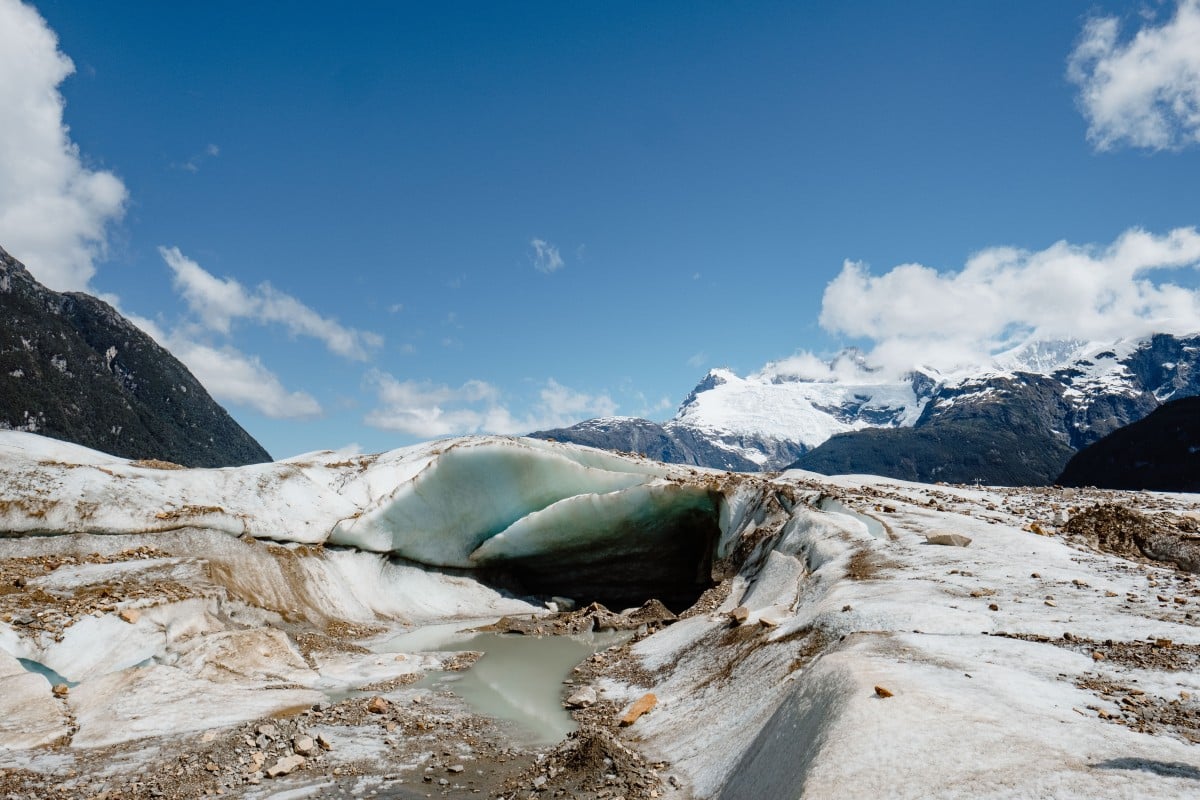
The Alps are strongly affected by global warming, even more than other places. The rise in temperature is one hundred percent above the global average. One consequence is the shrinking of glaciers, a lesser known consequence is rockfall. The rock walls become unstable due to warming and subsequent thawing of the permafrost which leads to debris-covered glaciers.
Glaciologist Kay Helfricht from the Institute of Interdisciplinary Mountain Research at the Austrian Academy of Sciences is researching the effects of debris cover in the project Hidden.Ice. He and his team want to know whether increased debris cover contributes to or slows ice shrinkage. They are also investigating the effects of debris-covered glaciers on the transport of debris in mountain streams that appear at the foot of the glaciers.
LONG-TERM ECOLOGICAL RESEARCH
For a number of glaciers throughout Austria, there are satellite images that show the development in the past thirty years. Other data used are those of aircraft and unmanned aerial vehicles (UAV). The main area of investigation is the established LTER site Jamtalferner in the Silvretta. An area in which the increase of debris-covered glaciers is documented by historical data. Further valuable information is provided by old photos and maps.
LTER-Austria is the Austrian Long-Term Ecosystem Research Network, which researches the structures and functions of ecosystems – as well as their long-term reactions to environmental influences. Multiple research institutions are involved.
MASSIVE LAYER OF DEBRIS CAUSES CONSERVATION
Compared to the Himalayas, there is relatively little debris on Austrian glaciers, the researcher explains. However, the amount tends to increase on the affected glaciers. In most cases, the debris layer on the glaciers is only a few centimetres to several decimeters thick. Glaciers heavily covered with debris look like scree slopes to amateurs.
The layer can have different effects on the ice below:
- A massive and closed layer of debris preserves the ice.
- If the ice layer is rather thin and uneven, the ice melts faster. Reason for this is the additional heat radiated by the darker material.
LOOSE ROCK IN HIGH MOUNTAIN STREAMS
In order to investigate the transport of scree through mountain streams, Helfricht looks at the transition from debris-covered ice to the ice-free glacier foreland. An increased removal of loose debris is to be expected here. The exact processes have to be determined in the project. It is obvious that rock material is slipping on the flanks of the glacier tongue. This uncovered previously covered ice and rock is discharged directly into the water.
The meltwater transports the debris into the high mountain streams, where they reach retention basins and water catchments and transfer them. Water catchments are all built facilities for the extraction of water from groundwater, such as wells.
RUBBLE TRANSPORT THROUGH MELTWATER
These processes fall within the research area of the Department of Hydraulic Engineering at the University of Innsbruck, which is why the glaciologist works closely with the experts.
“Our working hypothesis is that a large part of loose debris on the glaciers is discharged at the glacier tongues directly into the outflow. There, the meltwater takes the material with it. Especially during heavy precipitation and on hot summer days, a great deal of debris lands in the streams and is transported downstream.” Kay Helfricht
GEOLOGICAL METHODS OF MEASUREMENT
Scientists distinguish between two categories of debris:
- fine material that is constantly floating in water;
- coarser material which is carried by the flowing water at the bottom;
The project focuses on the transport of coarser parts. However, this is difficult to measure. “Although it is possible to install fishing baskets, it is often very unclear how representative such a measurement really is,” explains Helfricht. This is why additional geological measuring methods are used to measure height differences between deposited scree volumes. For this, the surface of the glacier tongue and the glacier foreland are mapped with aerial photographs at up to twenty measuring points per square meter. If carried out regularly, this allows an exact calculation of the volume of scree.
COMPUTER SIMULATION OF THE TRANSPORT
The first inventory is already under way. Measurements will be repeated in the coming summers. This data should then enable computer simulation of bedload transport in the streams. The project runs until 2021.
Hidden.Ice is funded by the Austrian Academy of Sciences (ÖAW). Project partners are the University of Innsbruck, the Catholic University of Eichstätt-Ingolstadt, ENVEO Environmental Earth Observation IT GmbH and the University of Natural Resources and Applied Life Sciences Vienna.
Kay Helfricht joined the ÖAW in 2014 as Junior Researcher at the Institute for Interdisciplinary Mountain Research and is now working as a Postdoc.







